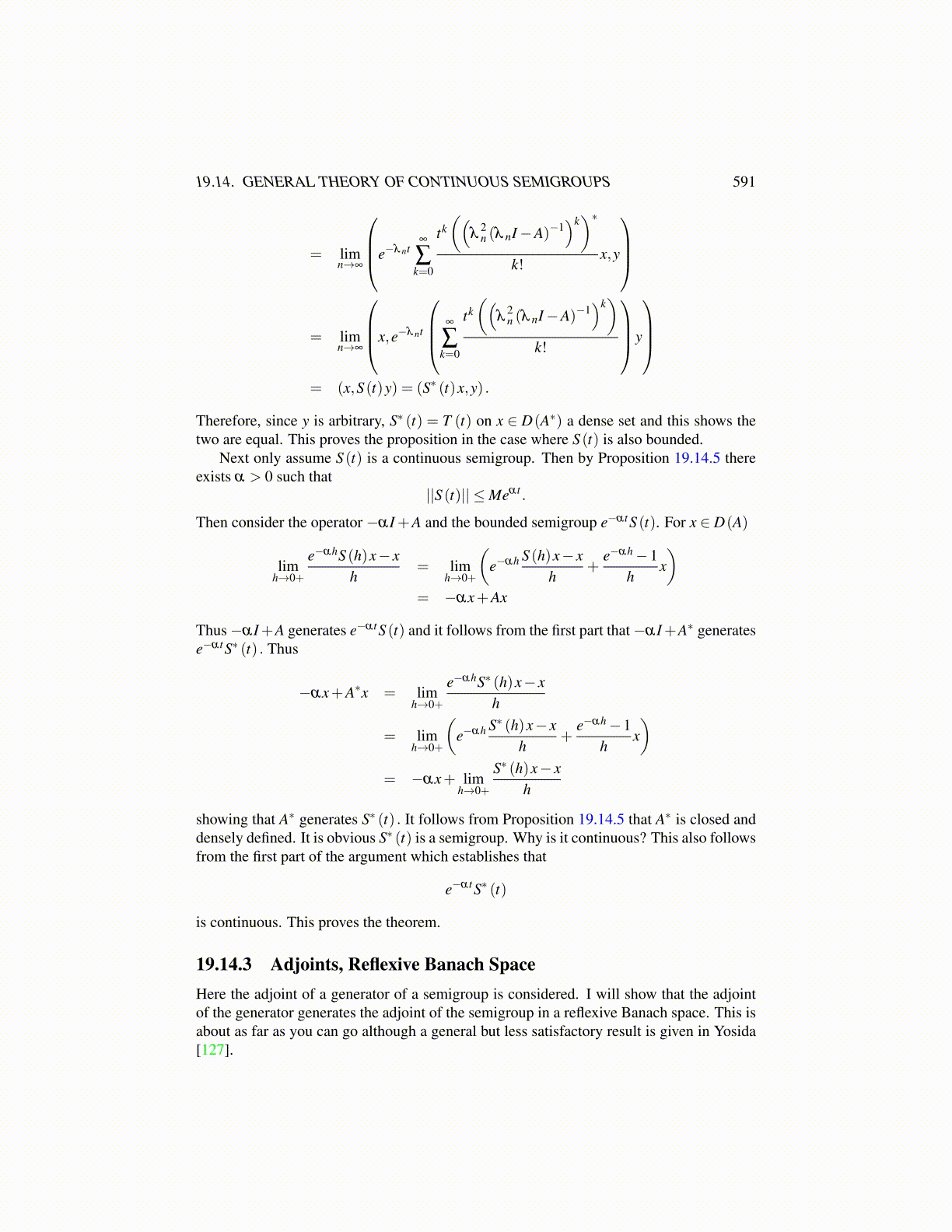
19.14. GENERAL THEORY OF CONTINUOUS SEMIGROUPS 591
= limn→∞
e−λ nt∞
∑k=0
tk((
λ2n (λ nI−A)−1
)k)∗
k!x,y
= limn→∞
x,e−λ nt
∞
∑k=0
tk((
λ2n (λ nI−A)−1
)k)
k!
y
= (x,S (t)y) = (S∗ (t)x,y) .
Therefore, since y is arbitrary, S∗ (t) = T (t) on x ∈ D(A∗) a dense set and this shows thetwo are equal. This proves the proposition in the case where S (t) is also bounded.
Next only assume S (t) is a continuous semigroup. Then by Proposition 19.14.5 thereexists α > 0 such that
||S (t)|| ≤Meαt .
Then consider the operator −αI +A and the bounded semigroup e−αtS (t). For x ∈ D(A)
limh→0+
e−αhS (h)x− xh
= limh→0+
(e−αh S (h)x− x
h+
e−αh−1h
x)
= −αx+Ax
Thus−αI+A generates e−αtS (t) and it follows from the first part that−αI+A∗ generatese−αtS∗ (t) . Thus
−αx+A∗x = limh→0+
e−αhS∗ (h)x− xh
= limh→0+
(e−αh S∗ (h)x− x
h+
e−αh−1h
x)
= −αx+ limh→0+
S∗ (h)x− xh
showing that A∗ generates S∗ (t) . It follows from Proposition 19.14.5 that A∗ is closed anddensely defined. It is obvious S∗ (t) is a semigroup. Why is it continuous? This also followsfrom the first part of the argument which establishes that
e−αtS∗ (t)
is continuous. This proves the theorem.
19.14.3 Adjoints, Reflexive Banach SpaceHere the adjoint of a generator of a semigroup is considered. I will show that the adjointof the generator generates the adjoint of the semigroup in a reflexive Banach space. This isabout as far as you can go although a general but less satisfactory result is given in Yosida[127].